
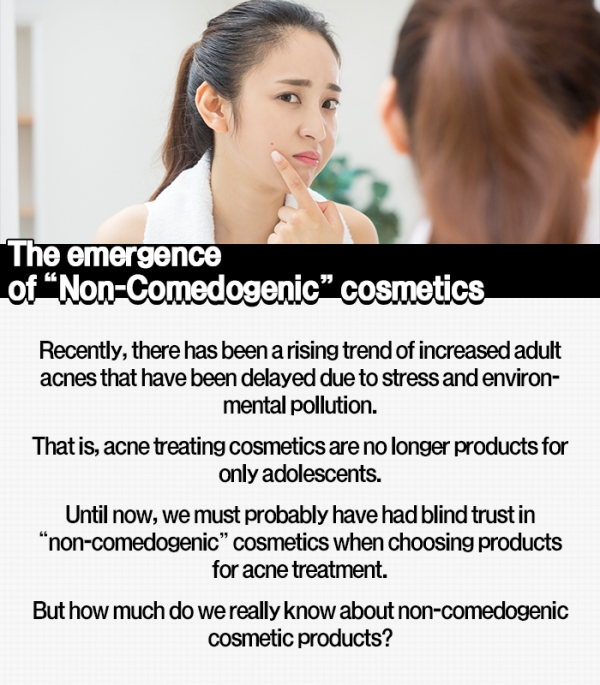
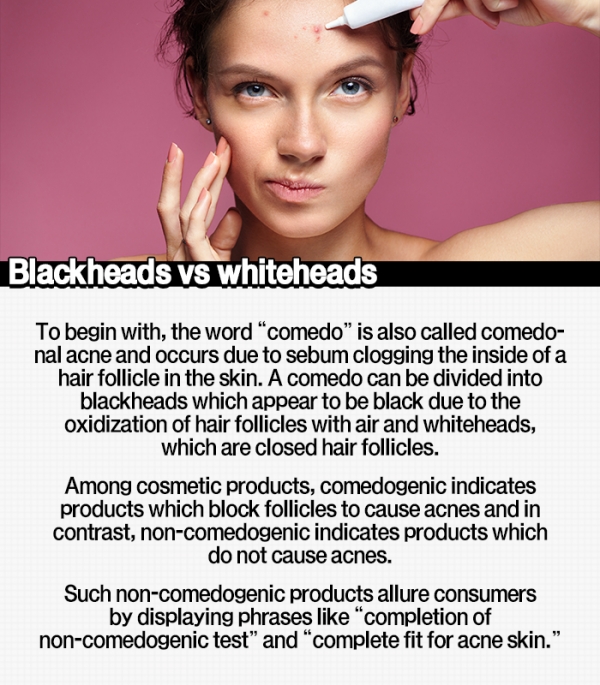


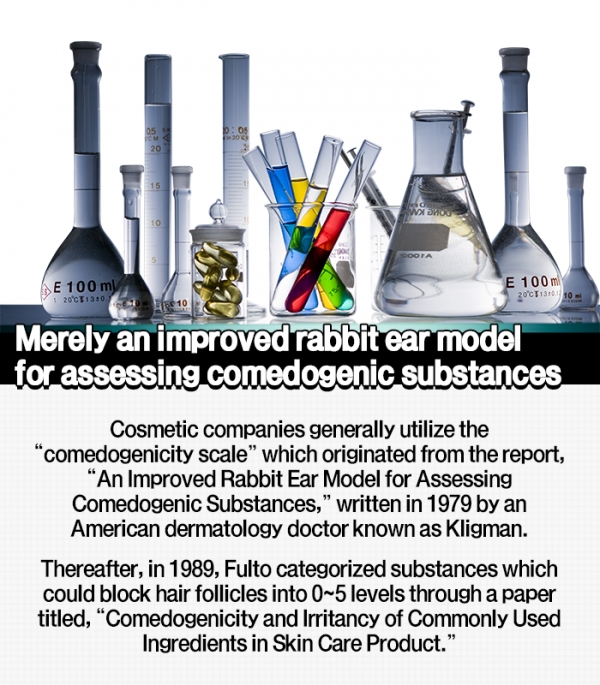
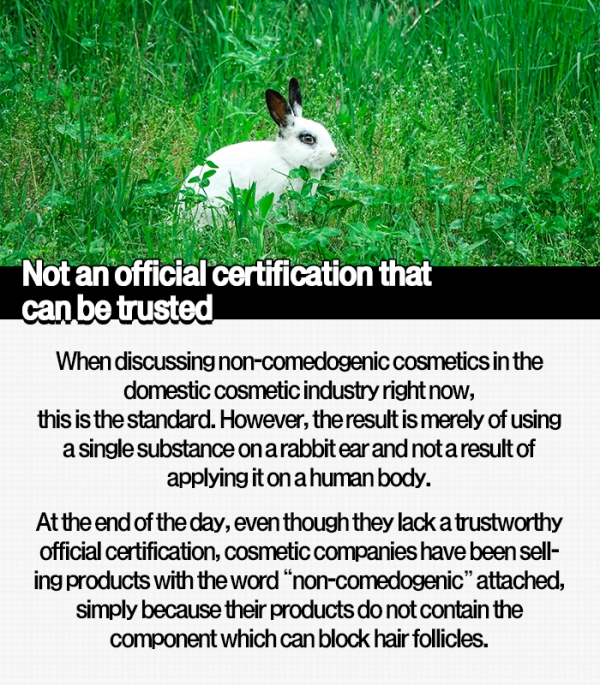
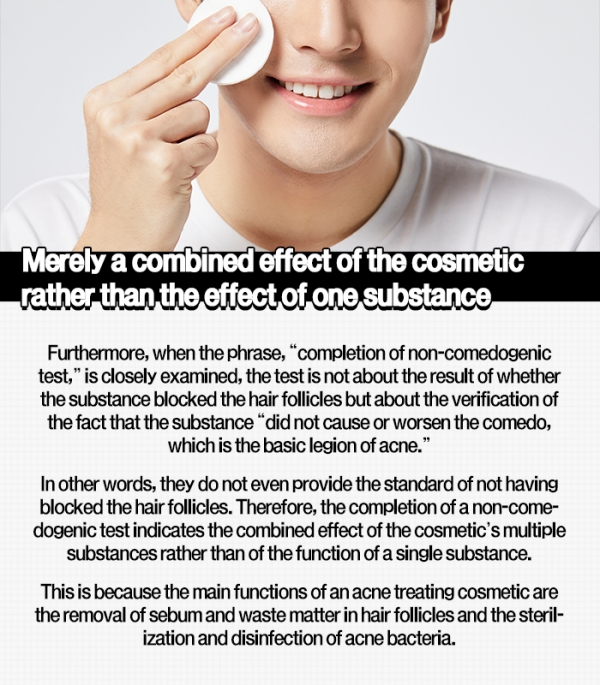
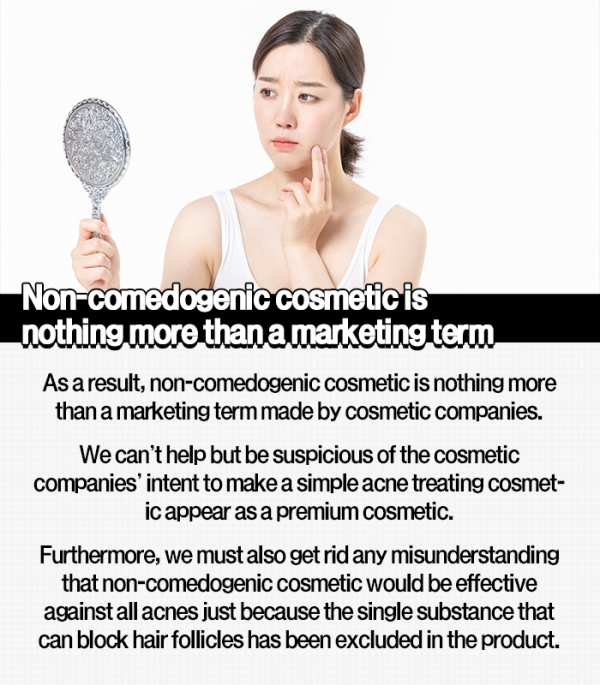

CARD 1. The emergence of “Non-Comedogenic” cosmetics
Recently, there has been a rising trend of increased adult acnes that have been delayed due to stress and environmental pollution.
That is, acne treating cosmetics are no longer products for only adolescents.
Until now, we must probably have had blind trust in “non-comedogenic” cosmetics when choosing products for acne treatment.
But how much do we really know about non-comedogenic cosmetic products?
CARD 2. Blackheads vs whiteheads
To begin with, the word “comedo” is also called comedonal acne and occurs due to sebum clogging the inside of a hair follicle in the skin. A comedo can be divided into blackheads which appear to be black due to the oxidization of hair follicles with air and whiteheads, which are closed hair follicles.
Among cosmetic products, comedogenic indicates products that block follicles to cause acne and in contrast, non-comedogenic indicates products that do not cause acne.
Such non-comedogenic products allure consumers by displaying phrases like “completion of non-comedogenic test” and “complete fit for acne skin.”
CARD 3. There are no international standards for non-comedogenic cosmetics
Ironically, however, in America’s FDA, there is no substance standard and furthermore, not even an established definition for a non-comedogenic cosmetic product.
Of course, there is no standardized test that can verify a non-comedogenic cosmetic.
Furthermore, there is difficulty in deciding whether the product causes acne simply by considering its substances.
This is because one needs to understand the complex biological and chemical environment of all the different skin types and also because it is difficult to predict the result once the many chemical materials mix at the final stage of the manufacturing process.
Hence, generalizing a single substance to become the standard for all skin types cannot help but be an impossible task.
CARD 4. Non-comedogenic cosmetic which is misunderstood as an acne-treating cosmetic
Korea’s Ministry of Food and Drug Safety also has not officially defined non-comedogenic cosmetics but merely limited the product definition to products that alleviate acne skin troubles as functional cosmetics for acne under the category of body cleaning products.
Therefore, because there is no regulation nor standard regarding the word, “non-comedogenic,” consumers can surely misunderstand such products to be acne-treating cosmetics.
Then what are the standards of non-comedogenic cosmetics which are sold by cosmetic companies?
CARD 5. Merely an improved rabbit ear model for assessing comedogenic substances
Cosmetic companies generally utilize the “comedogenicity scale” which originated from the report, “An Improved Rabbit Ear Model for Assessing Comedogenic Substances,” written in 1979 by an American dermatology doctor known as Kligman.
Thereafter, in 1989, Fulto categorized substances that could block hair follicles into 0~5 levels through a paper titled, “Comedogenicity and Irritancy of Commonly Used Ingredients in Skin Care Product.”
CARD 6. Not an official certification that can be trusted
When discussing non-comedogenic cosmetics in the domestic cosmetic industry right now, this is the standard. However, the result is merely using a single substance on a rabbit ear and not a result of applying it to a human body.
At the end of the day, even though they lack a trustworthy official certification, cosmetic companies have been selling products with the word “non-comedogenic” attached, simply because their products do not contain the component which can block hair follicles.
CARD 7. Merely a combined effect of the cosmetic rather than the effect of one substance
Furthermore, when the phrase, “completion of the non-comedogenic test,” is closely examined, the test is not about the result of whether the substance blocking the hair follicles but about the verification of the fact that the substance “did not cause or worsen the comedo, which is the basic legion of acne.”
In other words, they do not even provide the standard of not having blocked the hair follicles. Therefore, the completion of a non-comedogenic test indicates the combined effect of the cosmetic’s multiple substances rather than the function of a single substance.
This is because the main functions of an acne-treating cosmetic are the removal of sebum and waste matter in hair follicles and the sterilization and disinfection of acne bacteria.
CARD 8. Non-comedogenic cosmetic is nothing more than a marketing term
As a result, non-comedogenic cosmetics is nothing more than a marketing term made by cosmetic companies.
We can’t help but be suspicious of the cosmetic companies’ intent to make simple acne-treating cosmetics appear as a premium cosmetic.
Furthermore, we must also get rid of any misunderstanding that non-comedogenic cosmetics would be effective against all acnes just because the single substance that can block hair follicles has been excluded in the product.


